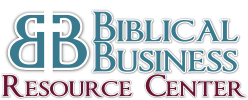What may be the single most important predictor of an organization’s long-term business development and survival is that organization’s ability to learn. In a world that is changing more rapidly today than at any previous time in human history, the consistent practice of learning is the only sustainable long-term strategy.
Products will come and go with increasing short life spans. Advantageous relationships will ebb and flow. Every other competitive advance likely will too.. But, the ability to change and grow will stimulate an organization to the constant renewal and refocus that our changing environment demands.
That’s one of the key issues in Peter Senge’s book, The Fifth Discipline. In it, he identifies the benefits and practices of a “learning organization.’ Unfortunately, the recommendations in Senge’s book are often outside of the reach of most small businesses.
Definition
By learning, I mean the ability to take in new information, formulate it into new ideas, and then put those ideas into existence. Learning, for adults on the job, always manifests as changed behavior. The individual, the team or group, and the organization as a whole has to do something differently for learning to have taken place.
For an individual, learning means the consistently applied process of exposing yourself to new ideas, and then changing your behavior as a result. It is not a one-time event, but rather a discipline that is maintained and applied forever. For example, I work a lot with sales people. When a salesperson develops a better question to ask in collecting information about a proposal, the issue isn’t the question, it’s the ability to continually develop better questions.
For an organization, which is made up of individuals, learning means the institutionalization of practices which result in innovative products, processes and practices. It’s not the new product which is the important element, it’s the ability to continually create new products.
This ability to continually change behavior, both organizationally as well as individually, is the single biggest indicator of long-term success.
“The only sustainable effective response to a rapidly changing world is cultivating the ability to positively transform ourselves and our organizations.” ~ Dave Kahle
“Learning is the most valuable benefit we can offer employees, and our ability as a company to learn faster and better than competitors is our most valuable competitive resource.” ~ Douglas McKenna, Microsoft Corp.
The Problem
Most individuals don’t value learning, and most organizations have never given it serious thought. In my work with salespeople for example, I’ve often noted that given a random selection of 20 salespeople only one in that group will have spent $25 of his/her own money on his own improvement in the last 12 months. The 5 percent who do invest in themselves are often the superstars, who have become that by relentless learning.
As a trainer and consultant, I’ve worked personally and contractually with over 500 different companies. Only a handful had a mention of learning in their value statements, a strategic initiative dedicated to it, or even a budget for investing in the process. Clearly, learning is not on the top of their minds.
Self-Assessment
Here are five simple questions to determine the degree to which your organization values and promotes learning.
- To what degree is ‘learning’ mentioned in the company’s foundational documents? (it’s mission values and vision statements, it’s self-description on the webpage, etc.)
- To what degree does the organization reward or penalize new ideas, attempts to do things better, or risks taken, regardless of the outcomes?
- To what degree does everyone understand that continually personal and organizational improvement is expected and rewarded within the organization?
- How much money (expressed as a percentage of payroll) does the organization invest annually in learning experiences for its employees?
- To what degree are individuals who refuse to learn tolerated within the organization?
Some Practical Ideas
The process of transforming an organization into one which learns, consistently and relentlessly, deserves more thought than this article allows. However, here are three low-budget, immediately implemental practices that will kick-start the process and bring a rich return on investment.
1. Promote the idea.
Announce, over and over in every situation, that the organization and every individual within it, needs to learn. Let that message become a mantra. Whenever possible, give examples, tell success stories, and recognize specific learning behaviors.
You should be promoting that message so consistently and passionately that the employees begin to tire of hearing it.
2. Invest in learning experiences.
A learning experience is an event in which the folks are confronted with new information, new ideas, and new insights, and encouraged to change their behavior as a result.
Examples:
- Hold a monthly meeting dedicated to the purpose of discussing a book which all of you have read and isolate two or three ideas of implementation out of it.
- Do the same thing with a jointly watched video or podcast.
- Reimburse key employees for attending seminars and require them to share some good ideas from them.
- Hand a book to a key employee, ask him/her to read it, and then talk with him about it.
3. Model learning behavior.
You can’t just talk about it and encourage others to do it. You must model what you want them to do. That means that you must read the books, watch the videos, listen to the podcasts, read the blog posts, go to the seminars, and then change your behavior in positive ways as a result. And, you must tell people what you are doing and why you are doing it.
You being a model of what an active professional learner does will go a long way to encourage and support similar behavior from the troops.


Recent Comments